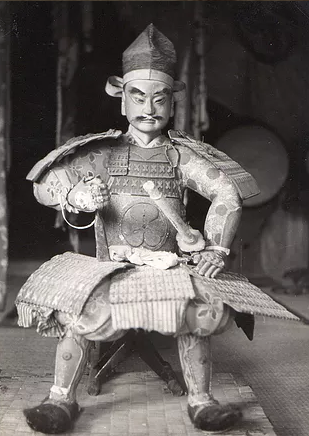History of Iaido

As a young man living in Japan during a period of constant warfare, Hayashizaki Jinsuke Minamoto Shigenobu (1546 – 1621) was exposed to many different styles of sword fighting techniques. Popular legend tells us that when his father was killed he dedicated himself to training in the martial arts in order to take revenge. A visit to the Hayashizaki Meijin shrine was to be of major significance concerning the inspiration for the development of Iai. It is here that when Hayashizaki was praying for guidance to assist him on his martial quest that he received divine inspiration for the technique of drawing the sword and cutting the opponent in one fluid motion. Continuing on the path of the sword, he developed his own sword style and started to attract many students of his own. He would eventually establish his own school of swordsmanship calling it Shinmei Musō-ryū. Although the school itself went through many name changes in times that followed, it is commonly accepted that it was the foundation for most of the styles of Iai practiced today.
The seventh generation head of Hayashizaki’s school of swordsmanship was Hasegawa Chikaranosuke Hidenobu (Eishin). He was to have a major influence on the further development of the teachings in the school. He adapted techniques usually reserved for the tachi (Long sword) to be used with the regular length katana. In addition he also added many new techniques to the system including defending attacks from different seated positions. Under the leadership of Hasegawa the school became known as Hasegawa Eishin-ryū and was also referred to as Hasegawa-ryū or Eishin-ryū, which is often used today. The Muso Jikiden Eishin Ryu name was formalized by Oe Masamichi Shikei who was the 17th headmaster of the school. A lineage of the masters is given below.
Lineage
Hayashizaki Jinsuke Minamoto no Shigenobu, founder
Tamiya Heibei Shigemasa, 2nd generation
Nagano Muraku Nyūdō Kinrosai, 3rd generation
Todo Gunbei Mitsushige, 4th generation
Arikawa Seizaemon Munetsugu, 5th generation
Banno Danemonnojō Nobusada, 6th generation
Hasegawa Chikaranosuke Hidenobu (Eishin), 7th generation
Arai Seitetsu Kiyonobu, 8th generation
Hayashi Rokudayū Morimasa, 9th generation
Hayashi Yasudayū Masatomo, 10th generation
Ōguro Motoemon Kiyokatsu, 11th generation
Hayashi Masunojō Masanori, 12th generation
Yoda Manzō Norikatsu, 13th generation
Hayashi Yadayū Masamoto, 14th generation
Tanimura Kamenojō Takakatsu, 15th generation
Gotō Magobei Masasuke, 16th generation
Ōe Masamichi, 17th generation
Hokiyama Namio, 18th generation
Fukui Harumasa, 19th generation
Kono Hyakuren, 20th generation
Tamiya Heibei Shigemasa, 2nd generation
Nagano Muraku Nyūdō Kinrosai, 3rd generation
Todo Gunbei Mitsushige, 4th generation
Arikawa Seizaemon Munetsugu, 5th generation
Banno Danemonnojō Nobusada, 6th generation
Hasegawa Chikaranosuke Hidenobu (Eishin), 7th generation
Arai Seitetsu Kiyonobu, 8th generation
Hayashi Rokudayū Morimasa, 9th generation
Hayashi Yasudayū Masatomo, 10th generation
Ōguro Motoemon Kiyokatsu, 11th generation
Hayashi Masunojō Masanori, 12th generation
Yoda Manzō Norikatsu, 13th generation
Hayashi Yadayū Masamoto, 14th generation
Tanimura Kamenojō Takakatsu, 15th generation
Gotō Magobei Masasuke, 16th generation
Ōe Masamichi, 17th generation
Hokiyama Namio, 18th generation
Fukui Harumasa, 19th generation
Kono Hyakuren, 20th generation
Kimura sensei was trained by the 19th and 20th generation Soke and then opened the Meishinkan dojo. Meishinkan dojo has now been renamed to Senshinkai and follows the teachings of Kimura sensei.

